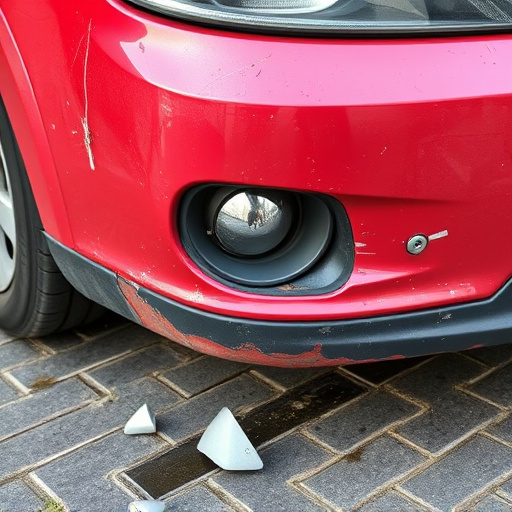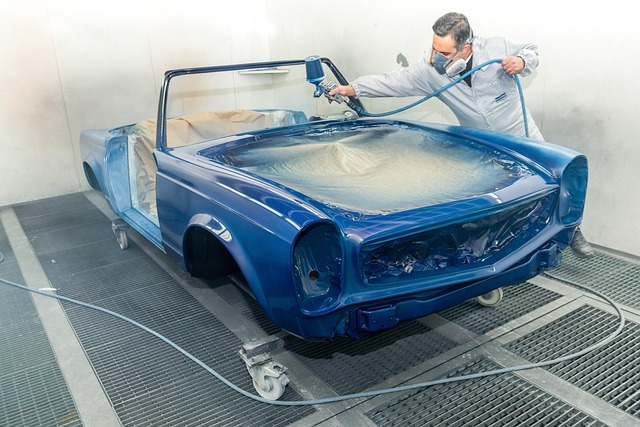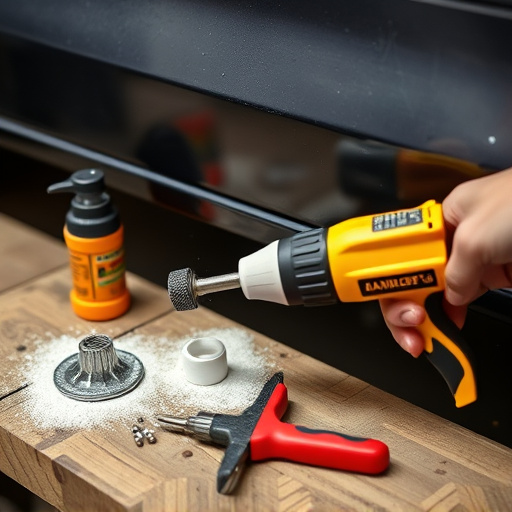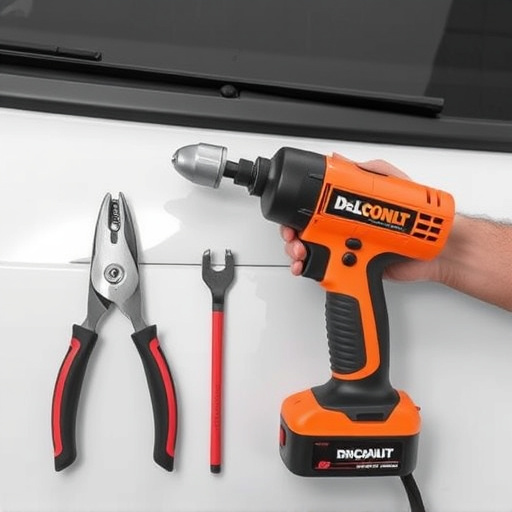Mercedes vehicles feature advanced safety technologies like the sequential turn signal system, which reduces accident risks in bustling urban areas by clearly indicating direction. To maintain reliable signals and ensure safe driving, follow a meticulous diagnosis and repair process, including visual inspections, multimeter assessments, and genuine Mercedes parts replacement. For complex issues or peace of mind, consult an experienced auto repair shop specializing in Mercedes sequential turn signal repair. Proper maintenance and aesthetics can be achieved through specialized auto body services.
Testing the functionality of a Mercedes’ sequential turn signal system is crucial for safe driving. This comprehensive guide delves into understanding the intricate Mercedes sequential turn signal mechanism, emphasizing safety precautions during testing. We provide a detailed step-by-step process for diagnosing and repairing these signals in Mercedes vehicles, ensuring a seamless and secure driving experience. Learn how to effectively address common issues related to Mercedes sequential turn signal repair.
- Understanding Mercedes Sequential Turn Signal System
- Safety Precautions for Testing the Functionality
- Step-by-Step Guide to Diagnosing and Repairing Sequential Turn Signals in Mercedes Vehicles
Understanding Mercedes Sequential Turn Signal System

Mercedes vehicles are renowned for their sophisticated technology and advanced safety features, and the sequential turn signal system is no exception. This innovative system enhances driver visibility during lane changes or turns, ensuring a safer driving experience. Unlike traditional turn signals, the Mercedes sequential signals flash in an ordered pattern, indicating the direction of the intended turn in a clear and distinct manner. This feature, often found on higher-end models, adds another layer of protection for both the driver and other road users.
Understanding how this system functions is crucial for anyone looking into Mercedes sequential turn signal repair or maintenance. The system typically consists of sensors that detect the vehicle’s speed and direction, controlling the turn signals accordingly. When a driver indicates a left or right turn, the signals activate in a specific sequence, flashing faster than regular signals to grab nearby drivers’ attention. This technology is a game-changer for auto body services, as it reduces the risk of accidents caused by miscommunication during lane changes, especially in bustling urban areas where vehicle paint repair might be more frequently needed due to close calls.
Safety Precautions for Testing the Functionality

When testing the Mercedes sequential turn signal functionality, safety should be your top priority. Always wear protective gear, including gloves and safety goggles, to shield yourself from any potential hazards that might arise during the testing process. Ensure the vehicle is parked on a level surface with the parking brake engaged for maximum stability. Never attempt these tests while the car is in motion or on an incline.
Additionally, work in an area well-lit by natural or artificial light to ensure clear visibility of any warning indicators or error messages that may appear. Keep all tools and equipment within easy reach to minimize the risk of tripping or falling. If you’re not a trained professional, consider seeking assistance from an experienced auto repair shop specializing in Mercedes sequential turn signal repair. They can provide guidance tailored to your specific vehicle model, ensuring a safe and effective testing process.
Step-by-Step Guide to Diagnosing and Repairing Sequential Turn Signals in Mercedes Vehicles

Diagnosing and repairing Mercedes sequential turn signals involves a systematic approach to ensure safe and effective functionality. Start by inspecting the signal lights visually for any signs of damage, cracks, or burn-out. Check the bulb sockets for corrosion or loose connections. A multimeter can be used to verify power supply and identify faulty components. If a bulb is damaged, replace it with a genuine Mercedes part. For corroded or loose connections, carefully clean and reattach the socket.
When addressing more complex issues, consult a professional mechanic who understands Mercedes vehicles. They may need to check the turn signal module, wiring harness, or even the vehicle’s computer system for errors. In some cases, updating the control unit firmware might be necessary. Remember that safe driving depends on reliable signals, so ensuring proper functioning is crucial. Proper auto body painting and vehicle restoration techniques can help maintain the car’s aesthetic appeal, while specialized services like car dent repair can address any cosmetic damage.
Testing and repairing the Mercedes sequential turn signal system requires a meticulous approach, prioritizing safety throughout. By understanding the intricate design of this advanced feature and adhering to stringent safety precautions, you can effectively diagnose and rectify any issues with your Mercedes vehicle’s turn signals. Remember, proper maintenance ensures not only optimal performance but also enhances road safety for all drivers. For any complex repairs, seeking professional assistance from a qualified mechanic is advisable, especially when dealing with modern automotive systems like the Mercedes sequential turn signal repair.














